Hard water was wrecking my home—dry skin, spotty dishes, and limescale buildup everywhere. I was done dealing with it. After researching, I landed on a Culligan water softener, and let me tell you, it’s been a game-changer. From softer laundry to better-tasting water, this system delivers.
If you’re tired of hard water woes, a Culligan softener is worth every penny. In this article, I’ll share my experience, break down the pros and cons, offer maintenance tips, compare it to other brands, and answer your burning questions.
Trust me, you’ll want one.
My Journey With The Culligan Water Softener
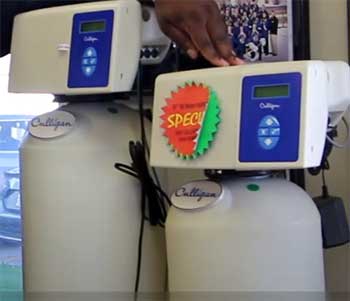
When I moved into my new home in a hard-water-heavy area, I noticed the signs immediately.
My skin felt like sandpaper after showers, my coffee tasted off, and my faucets were caked with white gunk.
I knew I needed a water softener, but the options were overwhelming.
After reading reviews and talking to neighbors, I decided to go with Culligan’s High Efficiency (HE) Series, specifically the Smart HE model with its fancy app.
The installation process was a breeze—Culligan sent a technician who set it up in about three hours, explaining everything as he went. No hassle, no mess.
Using it daily, I was blown away. My hair felt silkier, and my dishes came out of the dishwasher spotless. The Culligan Connect App became my new best friend, letting me monitor salt levels and water usage from my phone.
One day, I got a low-salt alert while at work, and it was so easy to schedule a refill delivery. The system’s smart sensors adjust to my household’s water needs, so I’m not wasting salt or water. Sure, it’s not perfect—more on that later—but it’s transformed how I live with water.
My water heater’s happier too, with less scale buildup. After six months, I can’t imagine going back to life without it.
The in-home water test Culligan offered before installation was eye-opening. They tested for hardness, iron, and chlorine, tailoring the system to my home’s needs. It felt personal, not like a one-size-fits-all solution. I’ve even noticed my laundry detergent works better, and I’m using less of it.
he only hiccup?
The initial cost gave me pause, but the long-term benefits—like protecting my appliances and saving on soap—made it worthwhile. If you’re on the fence, my experience says jump in; Culligan’s quality shines through.
The Pros of Owning A Culligan Water Softener
- Advanced Technology That Simplifies Life

Culligan’s Smart HE Series is like having a tech-savvy assistant for your water.
The Culligan Connect App lets you control settings, track usage, and get alerts for low salt or maintenance needs.
I love checking my phone to see how much water we’ve used or when a service is due.
The Aqua-Sensor technology adjusts regeneration based on actual water hardness, so you’re not wasting resources. It’s efficient and eco-friendly, which feels good. Plus, the Wi-Fi connectivity means I can tweak settings from anywhere—perfect for when I’m traveling.
- Durable and Long-Lasting Build
These systems are built to last. Culligan’s been in the game since 1936, and their tanks come with a 10-year warranty, sometimes more depending on the model. My HE Series feels sturdy, and the resin beads, which do the heavy lifting of softening water, are designed to last 10-15 years with proper care.
I’ve heard from neighbors who’ve had their Culligan systems for over a decade with minimal issues. That kind of durability gives me peace of mind, knowing I won’t need to replace it anytime soon.
- Comprehensive Water Testing and Customization
Before installing my system, Culligan’s free in-home water test was a revelation. The technician checked for hardness, iron, and other contaminants, then recommended a model tailored to my home’s needs. It wasn’t a generic pitch; it felt like a custom solution.
They even explained how my water’s 18 GPG (grains per gallon) hardness level needed a specific capacity. This personalized approach sets Culligan apart—you’re not just buying a box; you’re getting a system designed for your water.
- Reduced Wear on Appliances and Plumbing
Hard water is a silent killer for your appliances. My old water heater was starting to show scale buildup, which can cut efficiency and lifespan. Since installing the Culligan softener, I’ve noticed less buildup in my pipes and appliances.
My dishwasher runs better, and my washing machine uses less detergent. Studies show soft water can extend appliance life by up to 30%, and I’m already seeing the difference. It’s like giving your home’s plumbing a protective shield.
- Eco-Friendly Options Available
If you’re worried about salt waste, Culligan offers salt-free conditioners for brine-restricted areas. While these don’t fully soften water, they reduce scale buildup with minimal environmental impact.
My salt-based system is efficient, using proportional upflow brining to cut down on salt and water waste. I appreciate that Culligan gives options for eco-conscious folks like me who want to balance performance with sustainability.
The Not-So-Good Parts of Culligan Water Softeners
- High Upfront and Maintenance Costs
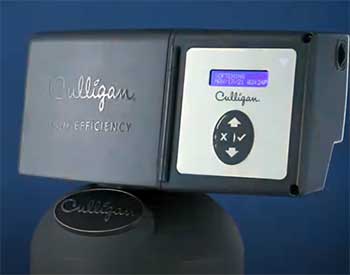
Let’s talk money. My Culligan system cost me around $2,500, including installation, which is steep compared to some competitors.
Service calls can run $150-$300, and you’ll need salt refills regularly—expect $20-$50 monthly depending on usage.
Proprietary parts, like the control valve, aren’t cheap either, and you can’t just grab them at a hardware store.
I budgeted for these costs, but if you’re on a tight budget, the price tag might sting.
- Not DIY-Friendly
If you’re a hands-on type, Culligan might frustrate you. The systems are complex, with proprietary components that require professional servicing. I tried troubleshooting a minor issue myself and quickly realized I needed a Culligan technician.
Unlike some brands where you can swap out resin or filters yourself, Culligan’s setup demands their expertise. This means more service calls and less control for DIYers like me who love tackling home projects.
- Mixed Customer Service Experiences
Customer service is a mixed bag. My local Culligan dealer was fantastic—prompt and knowledgeable. But I’ve read horror stories online about unresponsive reps, missed appointments, and long wait times for repairs.
On sites like ConsumerAffairs, some users report unanswered calls or pushy sales tactics. My experience was smooth, but it seems to depend on your local dealer. If you’re considering Culligan, check reviews for your area’s service team.
- Sodium Concerns for Health-Conscious Users
Since most Culligan softeners are salt-based, they add trace amounts of sodium to your water. For most people, it’s negligible—less than what’s in a slice of bread. But if you’re on a sodium-restricted diet, this could be an issue.
I consulted my doctor, who said it was fine for me, but you might need a reverse osmosis system for drinking water, which adds to the cost. Culligan’s salt-free options are an alternative, but they’re less effective for very hard water.
- Limited Transparency on Pricing
Culligan’s pricing isn’t upfront. You can’t browse their website and see model prices; you have to schedule a consultation. My quote came after a two-hour in-home visit, which felt like a sales pitch at times.
While the consultation was free and informative, I wish I could’ve seen ballpark figures online first. Other brands like Springwell list prices clearly, which makes budgeting easier. If you hate haggling or surprise costs, this opaque process might annoy you.
Maintenance Tips To Keep Your Culligan Running Smoothly
- Check and Refill Salt Regularly
Your Culligan softener’s brine tank needs salt to regenerate the resin beads. I check mine monthly, and the Connect App’s low-salt alert is a lifesaver. Use high-quality water softener salt—Culligan sells pellets, but any pure salt works. Avoid rock salt; it can leave residue.
I add about 40 pounds every six weeks for my three-person household. Keep the tank at least half full to prevent bridging, where salt clumps and blocks water flow. If you notice a salt bridge, break it up with a broom handle.
- Clean the Brine Tank Annually
Once a year, I clean my brine tank to prevent sludge buildup. Empty the salt, scoop out any muck, and scrub the tank with warm water and mild soap.
Rinse thoroughly to avoid contaminating the system. This takes me about 30 minutes and keeps the system efficient. Culligan’s manual has specific instructions, but if you’re unsure, call a technician. A clean tank means better regeneration and longer resin life.
- Schedule Professional Servicing
Culligan recommends a professional check-up every 1-2 years. I had my first service at the one-year mark, and the technician inspected the resin, valves, and sensors. It cost $200 but caught a small leak I hadn’t noticed. Regular servicing prevents big repairs down the line.
If your water starts tasting salty or you see scale buildup, book a service ASAP—it’s usually a sign the system needs tweaking.
- Monitor Water Hardness
Test your water’s hardness every few months to ensure the softener’s working. I bought a $10 test kit from a hardware store, and it’s super easy—dip a strip, wait, and check the color. My water went from 18 GPG to under 1 GPG after installation.
If hardness creeps up, it might mean the resin’s wearing out or the system needs recalibration. Culligan’s in-home tests are great, but DIY kits let you stay proactive.
- Protect During Power Outages
Power outages can mess with your softener’s programming. My Smart HE has a battery backup, but it only lasts a few hours. If you live in an area with frequent outages, consider a surge protector or backup generator.
After a storm knocked out my power, I had to reset the system’s clock, which was a minor hassle. Check your manual for reprogramming steps, or call Culligan’s support if you’re stuck.
Comparing Culligan Water Softener To Other Brands
Let’s put Culligan head-to-head with Hague, Sterling, and Genesis water softeners. I’ll break down how each stacks up across key factors to help you decide what’s best for your home.
- Culligan Vs. Hague Water Softeners
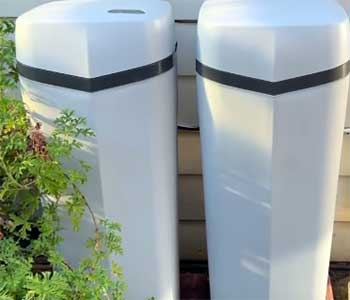
Culligan’s Smart HE Series shines with its Connect App and Aqua-Sensor tech, letting me monitor and optimize water usage remotely.
My $2,500 system was tailored to my 18 GPG water through Culligan’s in-home testing, and its 10-year warranty feels solid.
Hague’s WaterMax, priced around $2,000-$3,000, uses patented valves for efficiency but lacks smart features like an app.
Hague’s warranties can stretch to 25 years, but proprietary parts make repairs pricey.
Culligan’s tech and customization win for me, but Hague’s longevity is tempting if you don’t need gadgets.
- Culligan Vs. Sterling Water Softeners
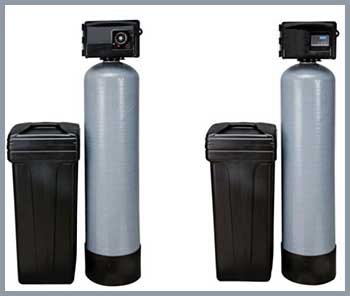
Culligan’s high-tech setup and personalized water testing make it a premium choice, though my system’s $2,500 cost and $150-$300 service calls add up.
Sterling, often tied to EcoWater, offers systems like the ERR3700 for $1,500-$2,500, with metered regeneration but no Wi-Fi or app.
Sterling’s warranties (5-10 years) are decent, and parts are more accessible than Culligan’s proprietary ones.
My Culligan’s smart features and durability edge out, but Sterling’s lower cost and simpler maintenance suit budget-conscious or hands-on folks.
- Culligan Vs. Genesis Water Softeners
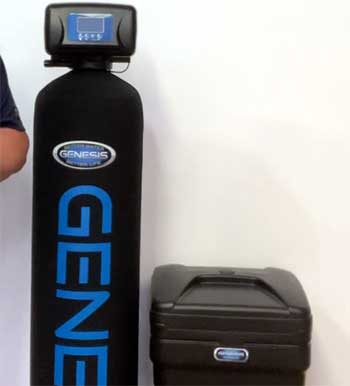
Culligan’s robust build and smart tech, like the Connect App, justify its $2,500 price, but its dealer-only maintenance frustrates DIYers like me.
Genesis systems, using Fleck or Clack valves, cost $800-$1,500 and are sold online, making them DIY-friendly with widely available parts.
Their 5-10 year warranties are solid, but they lack Culligan’s in-home testing or smart features.
Genesis is perfect for budget-savvy tinkerers, but I prefer Culligan’s tailored setup and tech for my hard water needs.
Frequently Asked Questions (FAQ)
Absolutely, if you’re dealing with hard water and value quality. Culligan’s systems are durable, effective, and backed by solid warranties. My skin, dishes, and appliances have all benefited. But the high cost—$2,000-$5,000 upfront plus maintenance—might not suit tight budgets. If you can afford it and want a long-term solution, Culligan’s worth it. For cheaper alternatives, check Springwell or big-box brands, but they may lack Culligan’s tech and customization.
With proper maintenance, Culligan softeners last 10-15 years, sometimes longer. My HE Series has a 10-year tank warranty, and the resin beads can last up to 15 years if you keep up with salt refills and annual cleanings. Hard water or heavy use might shorten this, but regular servicing helps. I’ve heard of systems lasting 20 years with diligent care, so it’s a solid investment.
If it’s in good shape, keep it. Test the water hardness to confirm it’s working—under 1 GPG is ideal. Check the model’s age and maintenance history; systems over 10 years might need replacing soon. My Culligan was a selling point when I bought my home, saving me installation costs. If it’s outdated or faulty, consider upgrading or switching to a DIY-friendly brand like Springwell.
No, it’s treated tap water. Culligan softeners remove calcium and magnesium, making it softer than untreated tap water. My system also filters chlorine, improving taste. However, salt-based systems add trace sodium, so if you’re on a low-sodium diet, add a reverse osmosis system for drinking water. Culligan’s not just tap water—it’s cleaner, softer, and better for your home.
Why Culligan’s My Go-To and Should Be Yours?
After living with my Culligan water softener, I’m hooked. It’s tackled my hard water issues, saved my appliances, and made daily life better with softer skin and cleaner dishes. The smart tech, durability, and tailored setup make it a standout, despite the higher cost and occasional service hiccups.
If you’re battling hard water, don’t hesitate—Culligan’s worth the investment. Get a free consultation, test your water, and see the difference for yourself. Your home (and your hair) will thank you.
